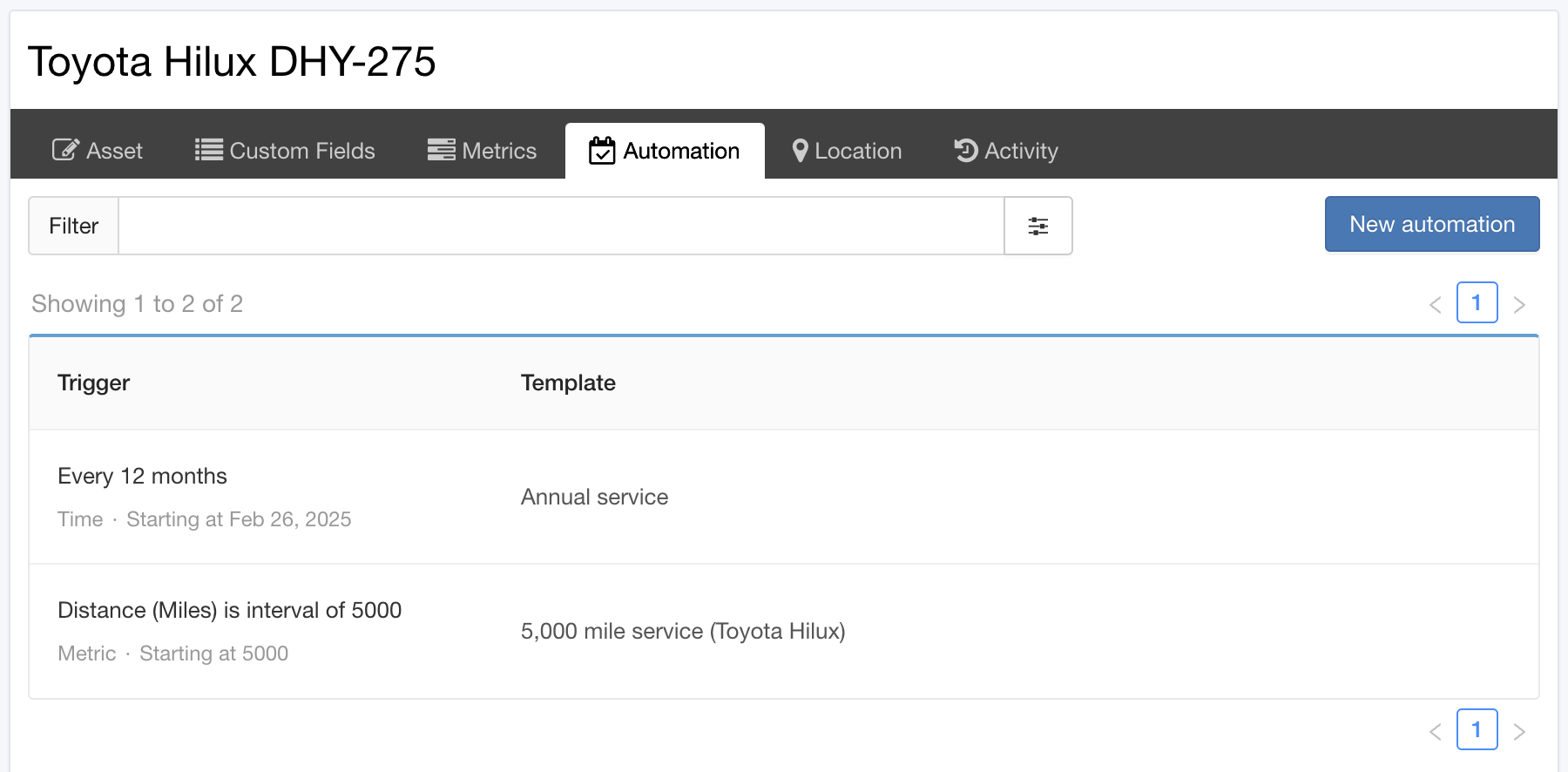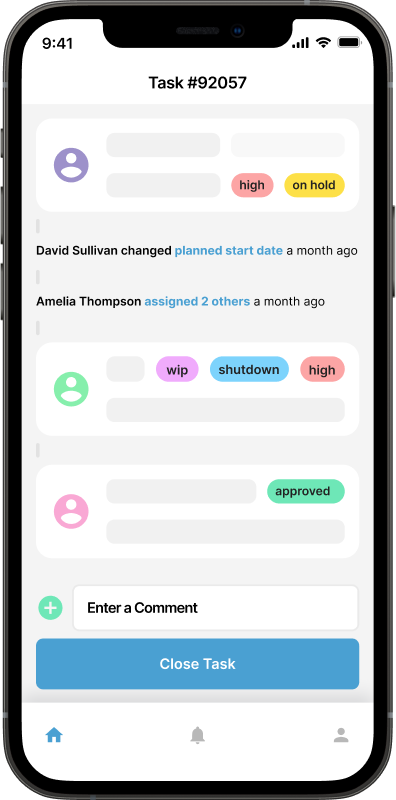How can preventive maintenance software help large vehicle fleets?

How can preventive maintenance software help large vehicle fleets?
The modern economy consists of millions of companies of all sizes. For many of these firms, operating a large vehicle fleet is a key part of how they get day-to-day tasks done. This often requires fleets of cars, vans, trucks, service equipment and heavy machinery.
From long-haul 18-Wheelers to small vans or cars, the important functions these vehicles perform is an integral function in our society. But with any inventory, the more you have, the more problems can arise.
CMMS also lets business owners know where their vehicles are at all times. It also enables them to engage in preventative maintenance and this is perhaps the most crucial part of managing large fleets. Proper management of these kinds of fleets is usually carried out by dedicated fleet managers, and they often use CMMS software in their role.
But what is CMMS software and how can it help with preventative maintenance for large vehicle fleets?
What is CMMS software?

Computerized Maintenance Management System or CMMS is software that helps you ensure your fleet stays on the road, maximizes ROI and minimizes costs. It helps companies in multiple sectors effectively manage stock levels, integrate better automation into their workflow, track assets and operate in a more efficient manner.
Why is preventative maintenance important for large vehicle fleets?
CMMS software is particularly useful when scheduling maintenance. When you have dozens of vehicles there will always be those fun little surprises when they break down or get into accidents and need fast replacement parts. But with CMMS you can look at your vehicle's history and ID any recurring issues or confirm the last time that delivery van got its oil changed. You can then set alerts and stagger them appropriately so that every 8 months an alert gets sent to the maintenance department and the driver that its time to get it serviced.
The transportation sector is a good example to look at, as these firms rely on their fleet of vehicles to be on the road and transporting goods/people. It’s therefore vital that they pay attention to preventative maintenance to remain profitable.
But what is preventative maintenance? Essentially its planned maintenance before any problems arise. By taking a proactive approach to this, firms in a sector like transportation are able to keep their fleet on the road and in the best condition.
This can have a direct benefit for the business, where well-maintained fleets use less fuel due to properly inflated tires and engines tuned to perfection. Preventative maintenance can also see less breakdowns, which impact orders arriving on time and how many vehicles are out on the road.
When you consider that the lifespan of vehicles is shorter and the cost of fuel is increasing even a small portion of their fleet is out of service, is unacceptable.
 CMMS Benefits for Large Vehicle Fleets
CMMS Benefits for Large Vehicle Fleets
This software allows firms with fleets to track and ID each vehicle. This data can be used to maximize route efficiencies. It's also much easier to have all records digitized and accessible for the people who need them. Relying on old paper records caused confusion. They got lost and every new manager had a “system” to maintain and track everything that only made sense to them. Now whenever you have a new employee or driver, create a user profile, assign them a vehicle and they instantly have access to its history, maintenance schedule and how to submit a request.
What kind of industries can CMMS help?
Large haulage companies with big fleets of 18-wheelers
Delivery based businesses with large fleets of smaller vans/trucks
Public transportation with large fleets of buses or trains
Car rental firms (Enterprise, Avis, Budget)
Service-based providers such as:
IT, Internet and Cable Installation Companies
Food Delivery Services
Carpenters, HVAC, Plumbing, Roofing Crews
Uhaul and other moving companies
Taxi and Limo services
Landscaping
Utility and Public Services
Municipal Governments
Although the above businesses might operate within their own niche, they all have large fleets of vehicles and can benefit from preventative maintenance of them. This is true whether its haulage companies keeping clients happy by delivering supplies on time or public buses having a well-maintained fleet for people to use. For companies that are involved in fabrication and construction, the wear and tear on equipment can make the need for CMMS more urgent.
What are the pros and cons of CMMS software for transportation business with large vehicle fleets?
Haulage companies
These firms operate large fleets of 18 wheelers and transport goods across thousands of miles. Most North American companies operate within Mexico, The United States and Canada. Traversing that much road increases the odds of mechanical failure and also collisions. Making sure the rigs are in the best possible condition ensures profitability and safety.
This enables fleet managers at these organizations to instantly view the status of their fleet and when the next service is due. They are then able to plan the service for when they know the vehicle will be back in the depot. Haulage companies may need to schedule maintenance for trucks that are out on the road, the mobile nature of the latest CMMS platforms is useful. This enables maintenance details and data to be updated on the move.
One downside of preventative maintenance software for this kind of transport business is that Cloud-based platforms need the Internet to work. This might not always be possible for firms based in rural locations or if using the platform in a location where the internet reception is poor.
Parcel Delivery businesses
Everything we buy online needs to get to us. The smaller, city-based delivery companies that are typically sub-contracted have more vehicles on the road than you might think. Keeping the fleet well-maintained and operational is integral.
There are many pros for smaller delivery companies using CMMS. It helps to minimize vehicle downtime for example and means that the maximum fleet capacity is always available for order fulfillment. Vehicles which are well-maintained also look better and make a more positive impression on the public as they drive around. CMMS software is also scalable, and this means it can grow with these kinds of smaller business, as the fleet they need to maintain grows too.
The only drawback of preventative maintenance software for these transportation businesses can be the cost. Although it does represent good value for money, smaller firms might not yet have enough orders each month to cover it.
Public transportation

Mostly consisting of buses, these often publicly funded corporations move people in a timely, safe manner. Perhaps no industry feels the wrath of unsatisfied customers more harshly than public transportation. Any disruption and the public is instantly thrown into chaos and people's lives are immediately affected.
Managers need to stay on top of their vehicles servicing schedules and maintenance requirements. This in turn keeps their fleet in great condition and safe to use for the public. Using this kind of software also gives fleet managers one central place to track their trains or buses and check what maintenance might be needed on them. This can help “Batch” the routine maintenance, which is when you can schedule 5 buses or vans to all have their oil changed at the same time. By creating an assembly line of tasks you can easily move more through in a shorter amount of time.
Preventative maintenance software also plays a key role in enhancing compliance and providing an effective audit trail of when vehicles have been maintained. This can be especially useful for firms who transport the public around, who work to tight regulations and may need to produce details of vehicle maintenance in case of any accidents/incidents.
One drawback of this software for public transportation firms could be the integration challenges it poses with existing in-house systems. Many businesses of this nature usually have their own systems in place to work with and they may not be able to integrate effectively with external CMMS platforms.
Car rental agencies
Car rentals and car sharing companies are a common sight in many towns and cities. They play a crucial role for enabling people without a car to rent one when needed. As people like to have a choice of makes and models to hire, most car rental agencies have large fleets of vehicles to choose from. This also means they have large fleets to maintain.
CMMS is handy for these businesses because it allows them to keep a clean and reliable looking fleet to rent out to people. Having a modern, clean and reliable vehicle fleet can really help a car rental agency build up a good brand image. The days of the old “rent-a-wreck” model doesn’t conform with 2024’s attitudes towards safety.
The geolocation tracking these platforms offer also makes it simple to track down any hired cars which have not been returned as expected. This can help lower insurance rates because there is more likelihood of having the car returned.
Car rental firms might find the potential downtime of Cloud-based CMMS software as one potential issue. If the CMMS platform itself goes down and you cannot access it, this could then have a knock-on effect for maintenance planning and keeping your fleet on the road. If you choose a reputable provider with a proven record in the sector like Maintainly, this isn’t a problem.
CMMS software: Prevention is better than cure
It’s always better in business to be ahead of the curve and be proactive in terms of how you operate. This puts you firmly in control and avoids any nasty surprises impacting your profits. When it comes to sectors such as transportation, which often include companies with large vehicle fleets, this is even more important.
Firms like this can’t afford to have vehicle downtime or have drivers off the road. This quickly leads to unhappy customers who have not got their orders on time. The best most cost-effective way is by implementing CMMS software that monitors and alters you of every opportunity to maintain your company's equipment. The “wait until something breaks” attitude only makes every instance more scattered and can have serious repercussions on the remaining fleet. By investing a minimum today you can preserve the maximum tomorrow.
Keeping your fleet running at maximum capacity increases revenue and productivity. No manager wants to see 2 or 3 trucks in the shop at the same time while the drivers are “patiently” waiting to return to work. This can cause many issues, especially if the problem was known beforehand and was relayed up the chain of command, but no action was taken.
It also allows managers to ID, procure and keep good levels of replacement parts stock for those hard-to-find parts or parts that take a month to arrive. Every manager knows the pain of finding replacements for that 1 difficult part and having a lot riding on the line to get it installed and the truck back on the road. This creates more trust amongst the drivers and maintenance staff because they’ll know the repair will be quick because they aren’t waiting on anything to arrive.

